Film Editor Margaret Sixel was given over 480 hours of footage to create MAD MAX: FURY ROAD. The final edit ran 120 minutes and consisted of 2700 individual shots. That’s 2700 consecutive decisions that must flow smoothly and immerse the viewer. 2700 decisions that must guide and reveal the story in a clear and concise manner. One bad cut can ruin a moment, a scene or the whole film. No pressure!
The most popular editing tendency for action scenes and films over the last 10 years has been the “Chaos Cinema” approach. A barrage of non-congruent and seemingly random shots that overwhelm the viewer with a false sense of kinetic energy and power. It can be effective in smaller doses, but exhausting and confusing when absorbed for 2 hours. If the story is incomprehensible due to editing…you are doing it wrong. So how do you keep action scenes energetic and fresh without shaky cameras and hypersonic editing?
One of the many reasons MAD MAX: FURY ROAD is so successful as an action film is the editing style. By using “Eye Trace” and “Crosshair Framing” techniques during the shooting, the editor could keep the important visual information vital in one spot…the Center of the Frame. Because almost every shot was center framed, comprehending the action requires no hunting of each new shot for the point of interest. The viewer doesn’t need 3 or 4 frames to figure out where to look. It’s like watching an old hand-drawn flip book whiz by. The focus is always in the same spot!
This was an edict passed down directly from director George Miller. Over the walkie talkies during every scene he could be heard saying “Put the cross hairs on her nose! Put the cross hairs on the gun!” This was to protect the footage for editorial and to ensure that the entire high speed film would be easily digestible with both eyes and brain. Every new shot that slammed onto the screen must occupy the same space as the previous shot. This is by no means a new technique, but by shooting the entire film in this way, Margaret Sixel could amplify and accelerate scenes, cut as fast as possible with the confident knowledge that the visual information would be understood.
“Eye Trace” is another editing technique that posits that you can guide the viewers eye and make them look where you want. By using motion in frame and/or positioning critical points of focus in successive shots to fall on a natural or comfortable area of the screen. An arrow shot from a bow flying left to right on screen of one shot…will seamlessly cut with a whip pan into the next shot that has a target and an arrow already stuck into it still quivering from the impact. Your eye is tracking the arrow left to right and your brain expects it to hit somewhere on the right side of the screen in the next shot. The viewer never sees the arrow make contact and doesn’t need to. A properly placed sound effect will convey the energy and impact. Apply this same technique to the punches, gunshots, spears, car crashes or any other shot in MAD MAX:Fury Road and you can see how much easier it makes the action to follow.
As they prepared to shoot the film, George Miller had no script. He did have over 3500 storyboards created by Mark Sexton. The Studio of course asked for a script and George said there wasn’t one. He offered the 3500 storyboards as it had taken him more than 10 years to get the story mapped out with this precision. The Studio said they NEED a script. George apparently had one cranked out but said it was “not good”. It didn’t have to be. He already knew how the whole film would look and feel. Visually center framed and barreling right at the audience.
More information on the post production and source material:
Tom Wood (VFX Supervisor) Interview
Making of Mad Max:Fury Road from ACS Victoria
Color Grade discussion with Eric Whipp
AVID: Margaret Sixel Interview
Until next time…

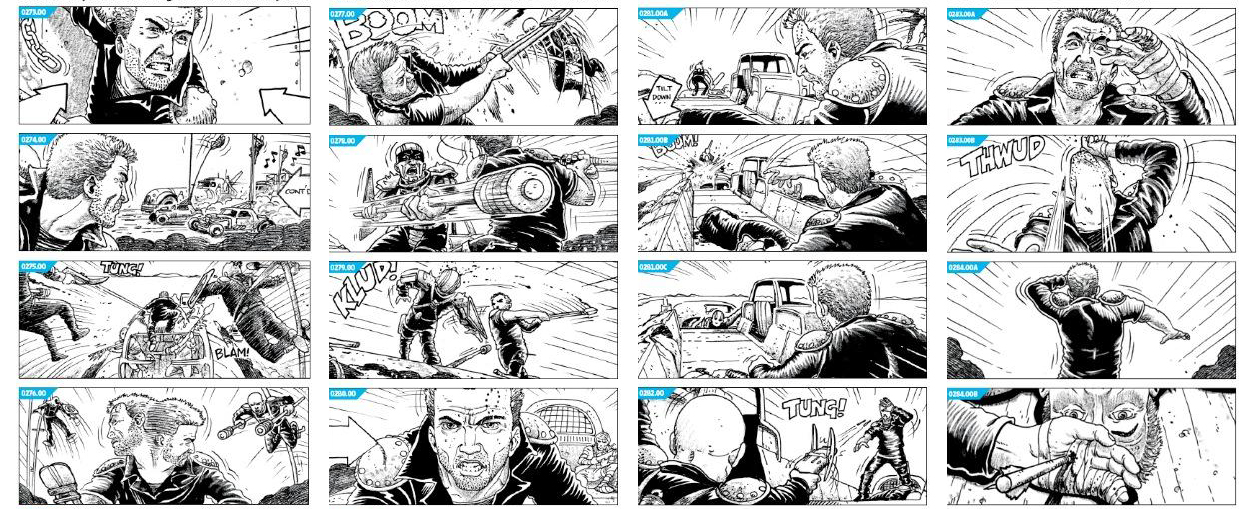
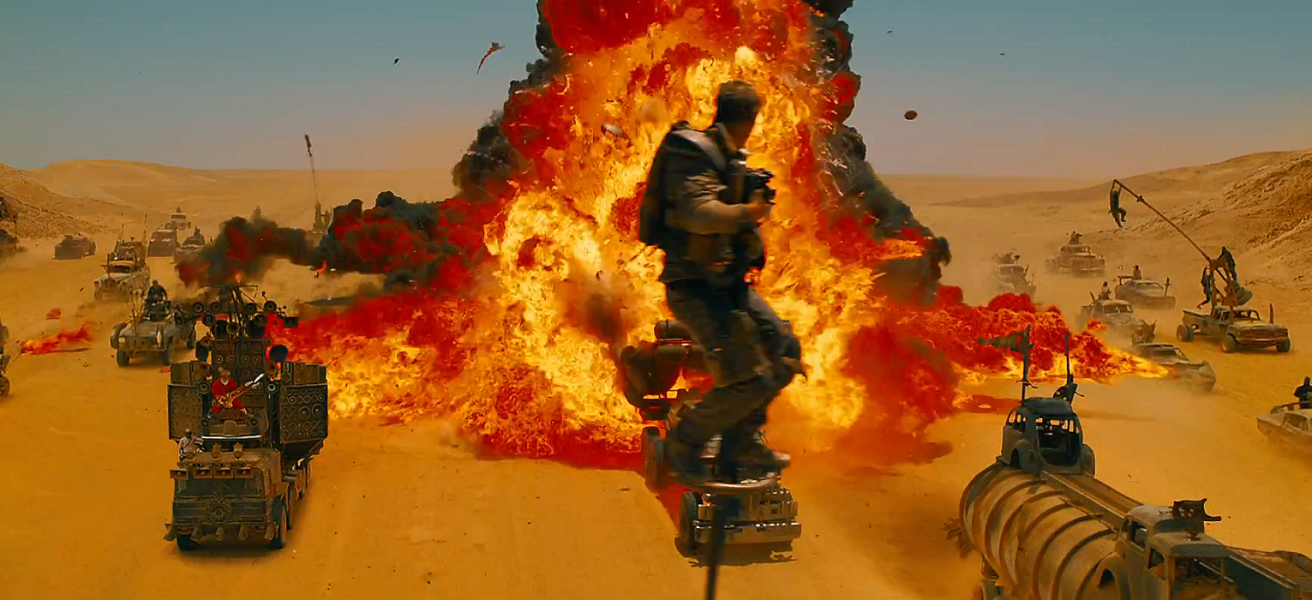
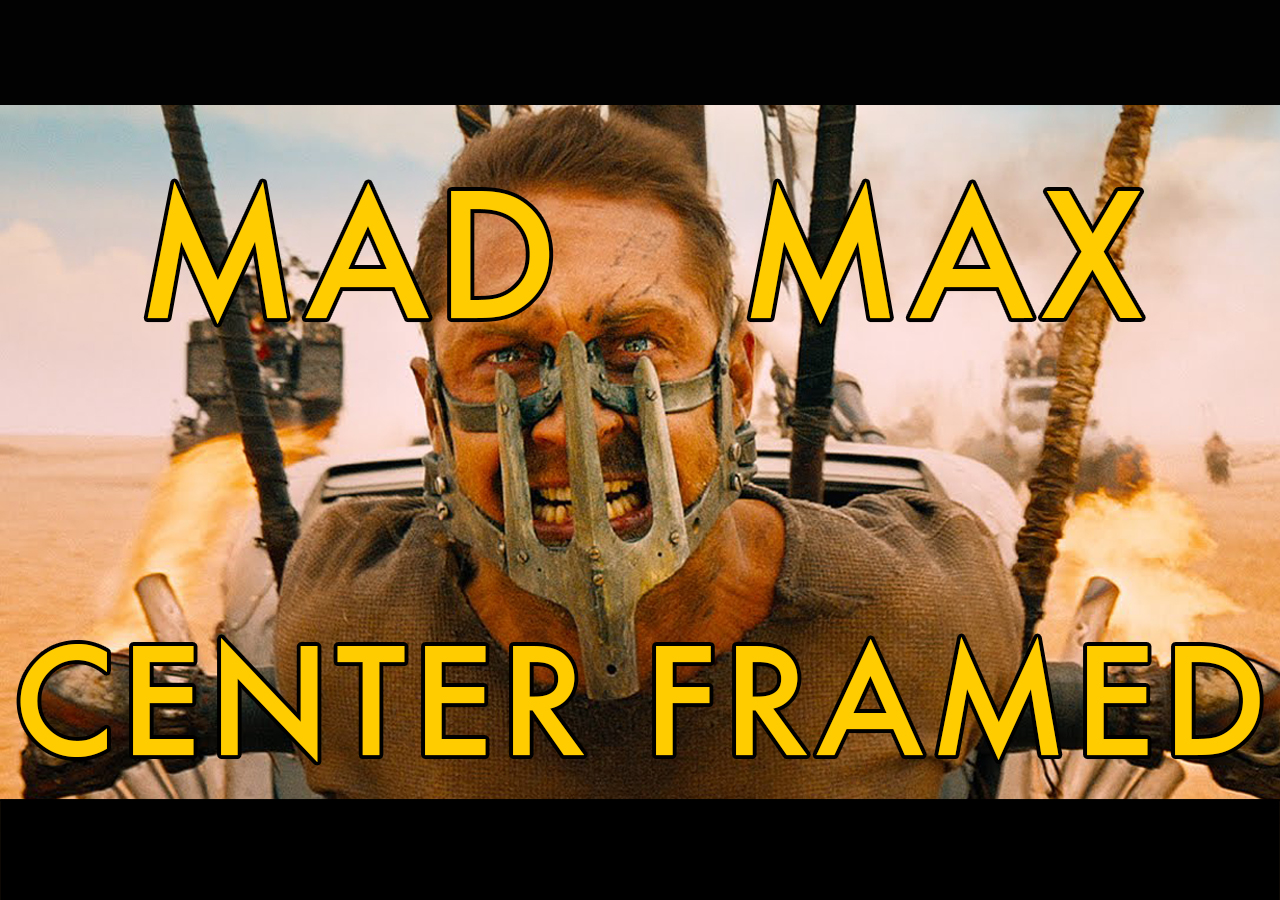
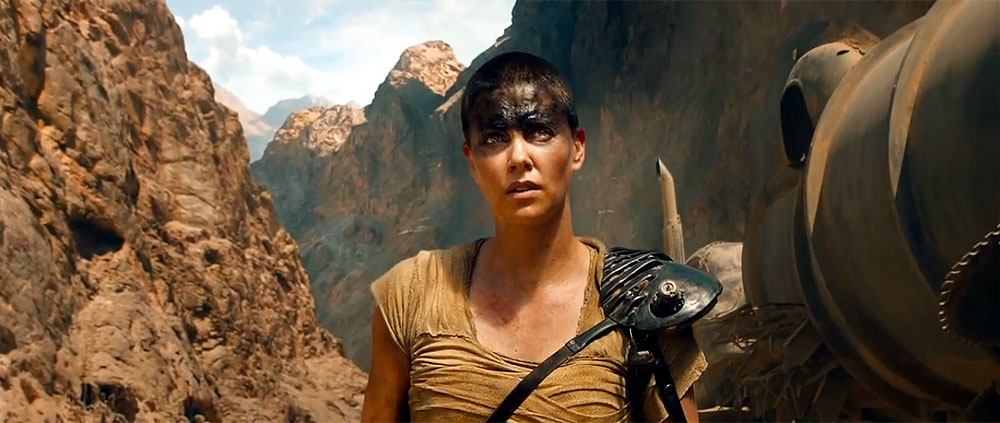
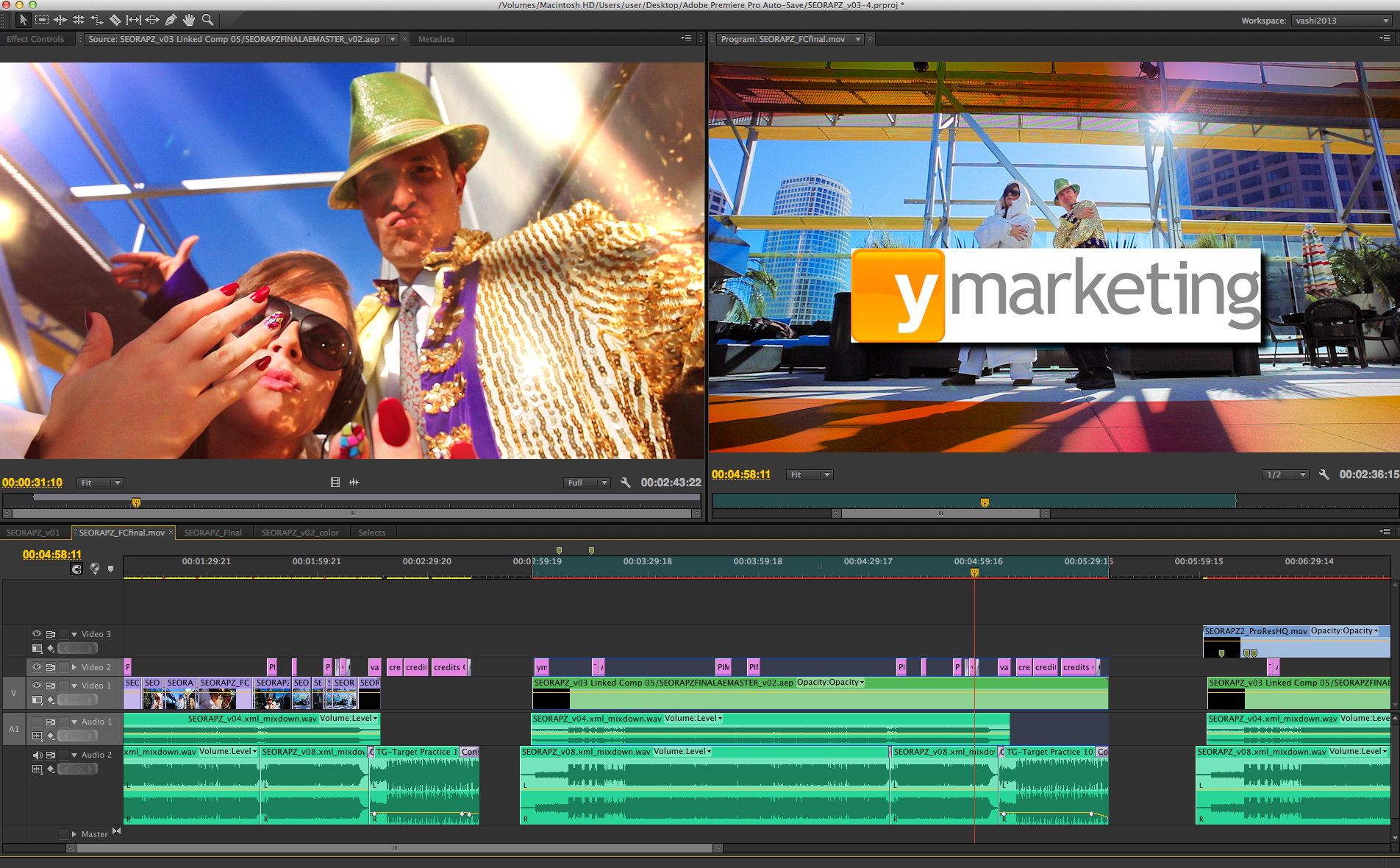
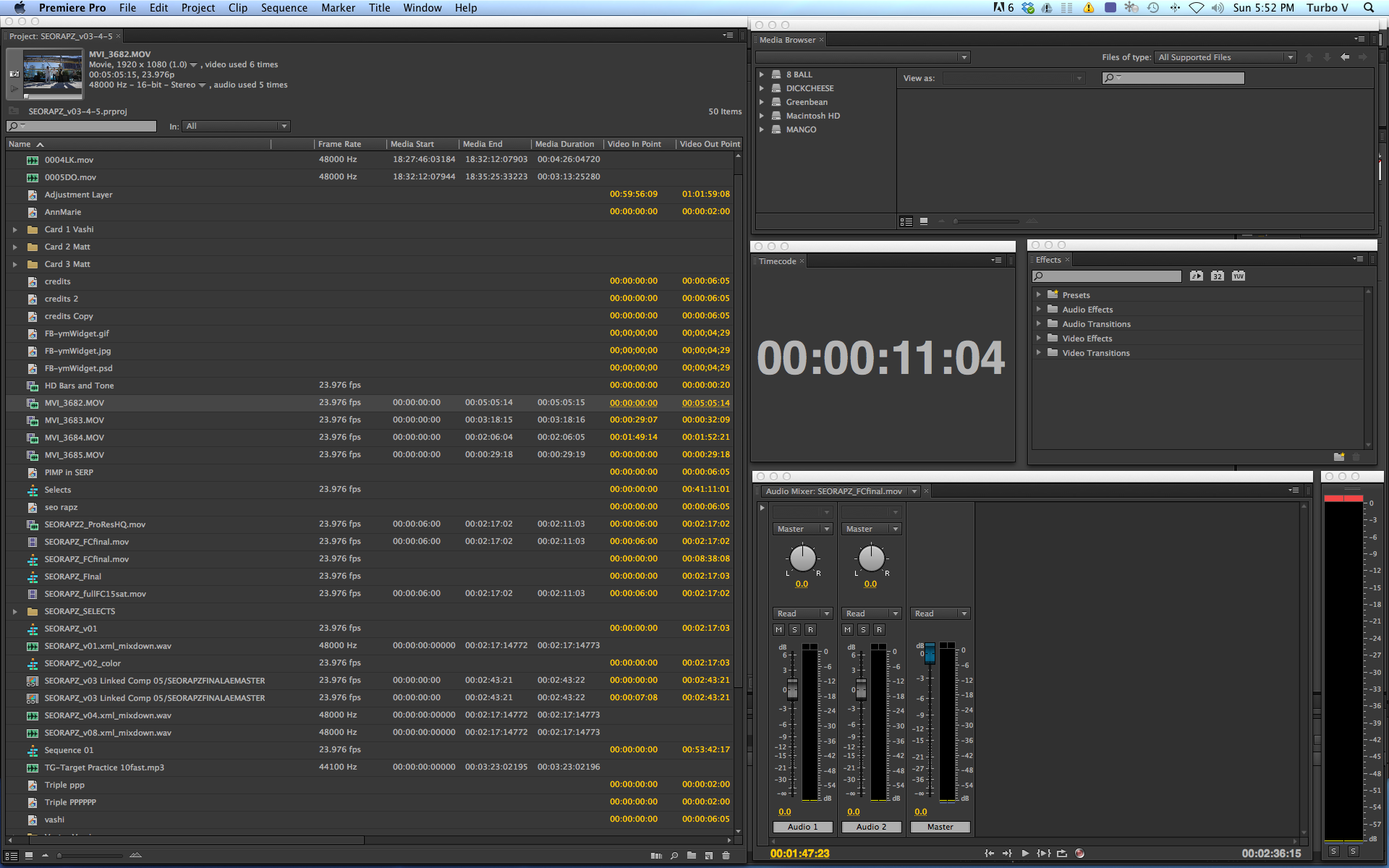
There are 2 comments
[…] conversation with Apichatpong Weerasethakul about Cemetery of Splendour or pieces from Vashi Nedomansky and Adrian Martin on Max Mad: Fury […]
[…] is the backbone of the filmmaking process. A masterfully edited film, such as “Mad Max: Fury Road” or “The Social Network,” can elevate the story, pacing, mood, performance, and themes […]